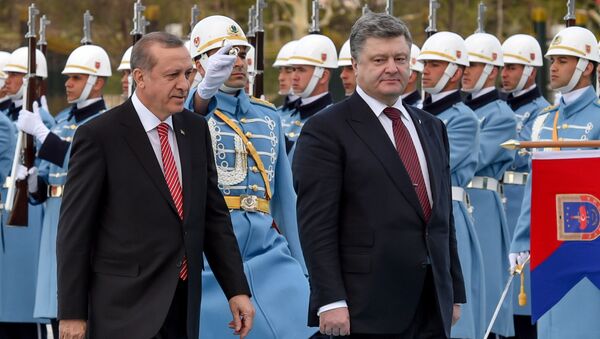Petro Poroshenko was in Ankara for a high-level strategic cooperation council meeting as the guest of Recep Tayyip Erdogan, only three weeks after Turkish Prime Minister Ahmet Davutoglu paid a snap visit to Kiev.
On the same day as Davutoglu was in Kiev to hold talks with Ukrainian Prime Minister Arseniy Yatsenyuk, Ukrainian Chief of General Staff Viktor Muzhenko met with his Turkish counterpart Gen. Hulusi Akar, in a sign of intensified military and defense relations.
After the chain of meetings the two countries announced that they had signed a number of political, economic and military deals.
“Geopolitics often makes for strange bedfellows, and at times countries with little in common politically or culturally still form agreements and alliances that make strategic sense,” Stratfor notes in its analytical piece on its website.
The analysis further reviews the possible areas of cooperation between Kiev and Ankara, such as, for example, joint cooperation in the Black Sea.
“Each is located on the Black Sea, which also happens to be the site of one of Russia's largest military buildups over the past two years,” it says, noting that the recent developments such as the reunification between Russia and Crimea and the expulsion of the Ukrainian military forces from the peninsula have “put Ukraine at a strategic disadvantage, forcing Kiev to remove its naval assets from its major base in Sevastopol (or lose some of them entirely) and relocate to a smaller naval base in Odessa”.
Another possible area of cooperation, the analysis suggests, is that the two can try to play the Crimean Tatars ‘card” in Crimea in an attempt “to reclaim the peninsula from Russian military forces.”
However it further calls it an “unrealistic goal”.
“Any Ukrainian and Turkish military cooperation is likely to be limited as the two countries primarily focus on their respective conflicts in eastern Ukraine and Syria, which are entirely distinct in terms of both geography and tactics,” it states.
But Stratfor still leaves room for some “security ties and defensive alignment with each other, at least for now”.





